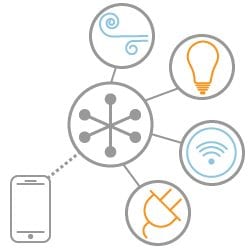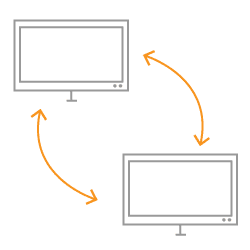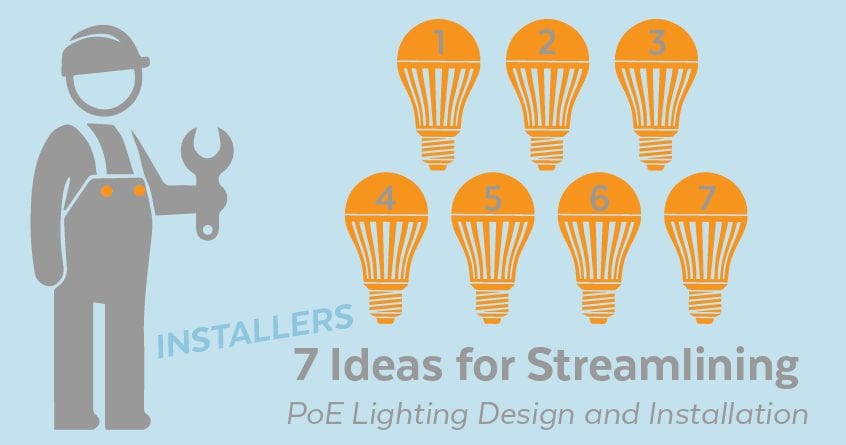Smart Power over Ethernet (PoE) lighting control systems are value-adding parts of most intelligent building systems today. That said, setting them up to industry standards while satisfying unique customer requirements is no walk in the park. Installers are grappling with a shrunk labor force, tight schedules, and building codes that vary from place to place. Here are seven ways to streamline your PoE lighting project and deliver value against the backdrop of conflicting protocols and dynamic customer needs.
1. Incorporate Value Drivers into the Design
PoE-enabled luminaries should deliver energy efficiency at the very minimum, but installers should aim higher. Think about ways to add value by enhancing the human experience in the spaces you create. One way to do this is by integrating lighting control solutions with other installations in the facility, such as HVAC and surveillance. Consider linking components like light sensors, motion sensors, and occupancy sensors with building management systems (BMS) and intuitive software. This way, building operations teams can leverage optimal data visibility to extract descriptive, prescriptive, or even predictive intelligence. Facility owners and users can harness in-depth building insights to inform actions that optimize the usage of the spaces in which they operate. You’re adding value by incorporating intelligent PoE lighting control design into other critical BMS components.
2. Every Space has its Unique Requirements—Study and Address Them
No matter your budget, don’t sacrifice building performance by delivering a general or subpar solution. It helps to consult with stakeholders in the project (facility owners, managers, and operators) to build lighting control systems around specific requirements. Thus, ask critical questions to help with the custom design of the solution. Which spaces need smart lighting controls? What level of code compliance does each area require? You can optimize your budget without compromising performance when you find a perfect balance between control features and regulatory compliance.
You may refer to online guides in your pre-project research on the most suitable smart lighting design for the client. These can provide good-better-best options for each space you’re illuminating with PoE-powered solutions. Then, discuss all possibilities with the client and incorporate the research insights into your technical blueprint.
3. Understaffed at Work? Wireless Lighting Controls to the Rescue!
If your project is understaffed, you’re likely to have problems meeting deadlines, working within budget, or even keeping your clients happy. You may also lack the time or personnel for proper pre-project research and design. However, it may be possible to work with a lean team and tight timelines when you bring wireless lighting controls into the picture.
Wireless control systems offer many installation advantages, including fast-tracking and simplifying design and deployment. They eliminate the cost of materials such as dedicated control wiring and traveler wires. Since these systems are scalable, they’re a cost-effective option for projects whose requirements may change in future.
4. Take the Guesswork Out of Code Compliance With the Right Solution Providers
Tracking the energy conservation and building code of your area of operation can be a pain, especially if you’re an interstate or intercity installer. That’s because such regulations differ from state to state and city to city, and they keep changing from time to time. It can be confusing, but it need not be the case for you when you’re working with suppliers that can help with code compliance.
A good case in point is the state of New York whose regulations draw from multiple industry standards. These include the 2015 International Energy Conservation Code and the ANSI/ASHRAE/IES Standard 90.1-2013. However, local jurisdictions don’t have to enforce the State Energy Code in whole. As such, cities like Albany or towns like Brighton may have a stricter local code.
Fortunately, lighting control vendors can help with comprehensive code guides specific to your state, city, or town. They can also provide system typicals for the space types you’re working with.
5. Be Futuristic: Think Beyond What’s Viable Today
Consider how fundamental changes in the industry can affect your business in the long term. Your operating conditions might not remain favorable when counterfeits or new equipment-makers enter the market. For example, would you be able to sustain operations if the owner of a proprietary protocol you’re relying on left the market? Is your supplier offering lighting control products compatible with other building systems? To be on the safe side, engage a provider whose lighting control solutions can integrate with other components of standard building systems and software. Also, consider long-term costs, including when a cheaper product is available today. Prioritize longevity and scalability too.
6. Keep all the Good Customers to Yourself by Delivering on or Exceeding Their Expectations Every Time
The modern facility owner or space occupant is more informed than ever before, and they’re asking much more from lighting control equipment installers. Add that to the need to differentiate against the backdrop of shortened project schedules, changing building codes, demand for energy-efficient design, and new technologies. How do you consistently meet higher customer expectations in a highly competitive commercial property market today?
Try using some of the project management and optimization tools available to contractors in the real estate industry. With free resources like Lutron’s QuEst-D, you can quickly provide potential customers with the information they need to make the right choice. Tools that help to minimize risk, satisfy project bids, and simplify system design and installation are also essential to the attainment of sustained competitiveness.
7. 24/7 Support: To be There for Your Customers, Your Providers Must be There for You
Sometimes, your customers will raise issues that only your smart building system vendor or equipment manufacturer can resolve. So, look for a provider with a solid reputation for innovation, reliability, and 24/7 customer support. Be sure that your supplier is willing to address long-term customer concerns on an ongoing basis from the initial installation.
Wrapping it Up
Are you struggling with the installation of energy-saving PoE lighting control systems? There are practical ways to overcome common challenges, speed up your project, and deliver on high customer expectations. To add value by enhancing the human experience of the physical spaces you create, consider integrating lighting controls with your client’s building systems. Look for providers that simplify building code compliance. Also, engage manufacturers that guarantee your future via ongoing customer support, innovation, scalability, and support for standard integrations. To compensate for a stretched workforce, consider adopting cost-effective wireless solutions. Finally, your business can succeed in a highly competitive real estate landscape by leveraging free software tools to reduce risk and fast-track design and installation.
Are you looking to set up value-adding, energy-efficient, and smart lighting systems today? At Versa Technology, we offer a wide range of code-compliant PoE lighting control solutions. Contact us to discover more!

